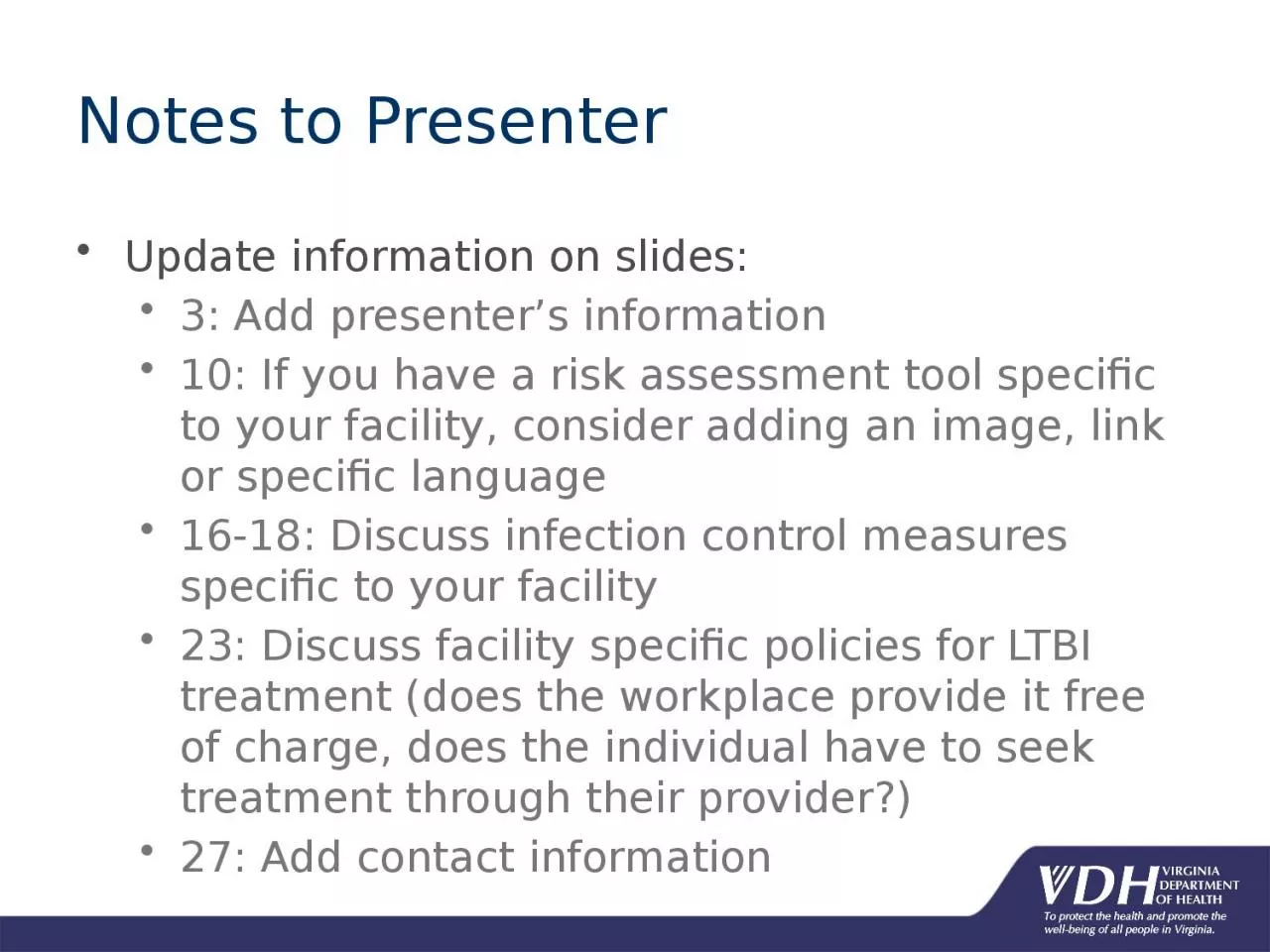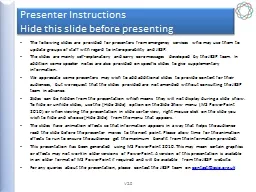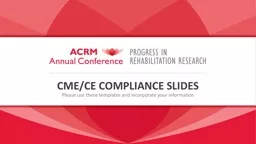PPT-Notes to Presenter Update information on slides:
Author : christina | Published Date : 2024-02-09
3 Add presenters information 10 If you have a risk assessment tool specific to your facility consider adding an image link or specific language 1618 Discuss infection
Presentation Embed Code
Download Presentation
Download Presentation The PPT/PDF document "Notes to Presenter Update information on..." is the property of its rightful owner. Permission is granted to download and print the materials on this website for personal, non-commercial use only, and to display it on your personal computer provided you do not modify the materials and that you retain all copyright notices contained in the materials. By downloading content from our website, you accept the terms of this agreement.
Notes to Presenter Update information on slides:: Transcript
Download Rules Of Document
"Notes to Presenter Update information on slides:"The content belongs to its owner. You may download and print it for personal use, without modification, and keep all copyright notices. By downloading, you agree to these terms.
Related Documents














